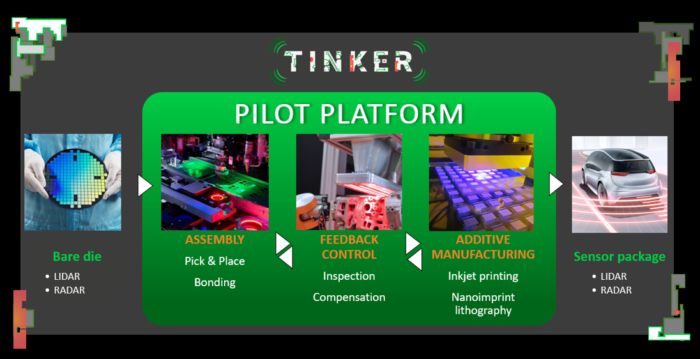Autonomous driving and self-driving cars represent one prominent example for the use of microelectronics and sensors, most importantly RADAR and LiDAR sensors. Their respective markets have a big potential, e.g., it is estimated that the market size of LiDAR in automotive will double itself in the next two years (within 2020 to 2022). The public awareness and the industrial need for further miniaturization of such sensor packages is the main driver of ongoing efforts in the automotive sector to be able to integrate such devices into the car body like in the bumpers, grilles and exterior lamps (headlights & rear lamps) instead of attaching them (e.g., on top of the car in case of LiDAR device). Safety (for the driver and others) is the most important key aspect of the automotive sector. Therefore, highly-value and high-performance RADAR and LiDAR systems are required for advanced driver-assistance systems (ADAS) as well as autonomous cars. Current bottlenecks are relevantly large size of such sensor devices, their weight and power consumption. Since these factors are highly limited within cars, further miniaturization and improving functionality and efficient use of resources is highly demanded.
OUR AMBITION
In the period of 3 years and 6 months, starting from 1st of October 2020, European Union’s H2020 funded TINKER project is set to develop a new reliable, accurate, functional, cost-affordable and resource-efficient pathway for RADAR and LiDAR sensor package fabrication, following 2 main objectives:
- Establishing the TINKER platform based on Additive Manufacturing {AM},
- Fabrication of RADAR and LiDAR sensor packages as use cases.
TINKER’s approaches to use “key enabling technologies, especially inkjet printing and nanoimprint lithography”, as disruptive and flexible manufacturing techniques in micro-part assembling is in alliance with the overall scope of the call “Transforming European Industry”. The proposed TINKER pilot represents a high degree of flexibility and reliability due to its modular character.

OUR GOAL
According to the work program, TINKER pilot platform addresses the expected impacts, such as:
- decrease of production time,
- improving speed, accuracy and reliability of pick and place assembly techniques,
- measurable increase of automation level,
- higher or similar precision level,
- reduction in rejection rates during the production process via feedback control,
- improved miniaturization level and efficient use of resources by additive manufacturing.
The main purposes of this project is to widen the range of available miniaturization and microelectronic fabrication possibilities including the novel approaches in assembly processes directly in production steps.
PROJECT FACTS
| Project Acronym | TINKER |
| Project Full Title | Fabrication of Sensor Packages enabled by Additive Manufacturing |
| Start Date | 01/10/2020 |
| End Date | 30/03/2024 |
| Duration in months | 42 |
| Call (part) identifier | H2020-NMBP-TR-IND-2018-2020 submitted for H2020-NMBP-TR-IND-2020-singlestage / 05 Feb 2020 |
| Topic | Assembly of micro parts (RIA) |
| Project EU funding | €10,241,526.25 |